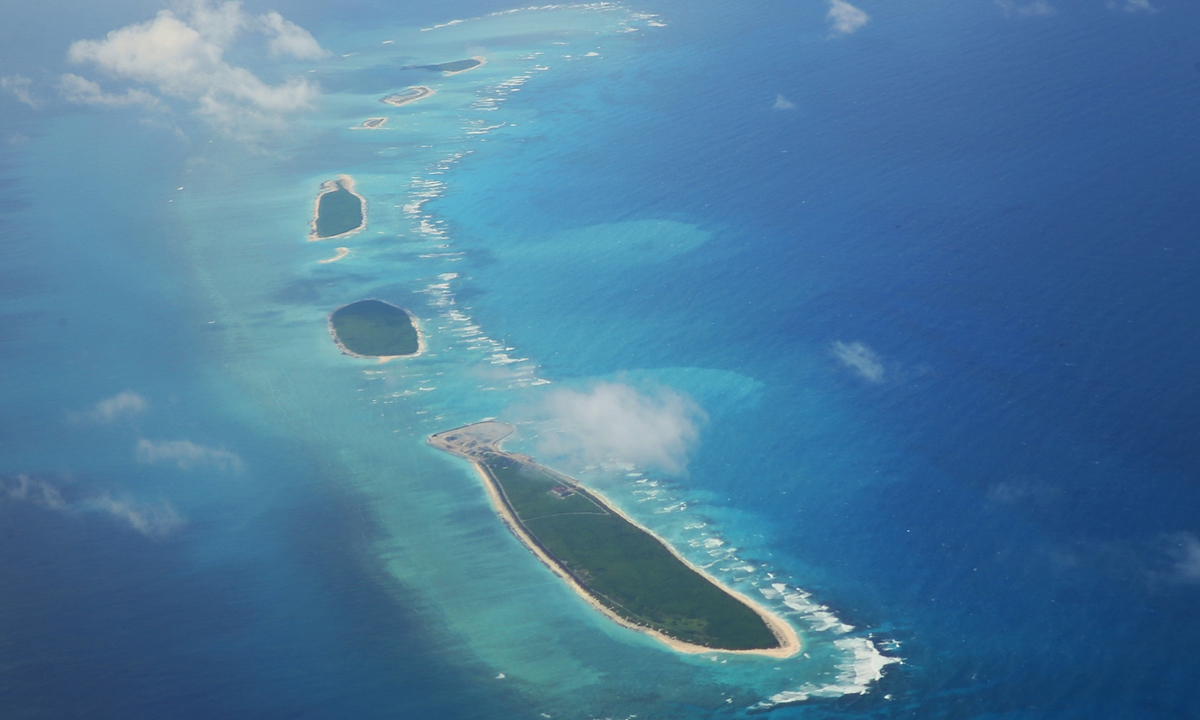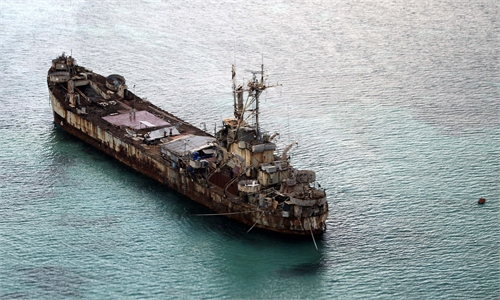IN-DEPTH / IN-DEPTH
False report exposes US think tank’s inglorious connection with the Philippines

South China Sea Photo: VCG
Apart from directly stirring up frictions in the South China Sea region, it has been found that the Philippines has cooperated with some US anti-China forces to launch a cognitive warfare that defames China on the South China Sea issue, to hurt China's international image, and drive a wedge between China and relevant countries in this region.
Recently, the Asia Maritime Transparency Initiative (AMTI), a project under the US' long-established conservative think tank Center for Strategic and International Studies (CSIS), released a report on "environmental threats" in the South China Sea. The report, which groundlessly claimed that China has destroyed or damaged over 21,000 acres of coral reef in the South China Sea, has been cited by many Western and Philippine media sources.
The false report cited a few satellite images and referenced falsified allegations from years ago, making such a report neither factual nor verifiable, the Chinese Embassy in the Philippines responded on Saturday.
"China has always attached great importance to the protection of the ecological environment of the Nansha Islands and Reefs and their adjacent waters," it noted.
While studying this report, the Global Times found that it had little persuasive and systematic evidence, relying heavily on some citations of media reports and "expert" claims. Its only "first-hand evidence" seemed to be its "analysis of commercial satellite imagery" on 181 features of the South China Sea.
Chinese scholars on the South China Sea have refuted this discredited report.
The methods used to reach its conclusions were not scientifically rigorous, Yang Xiao, deputy director of the Institute of Maritime Strategy Studies, China Institute of Contemporary International Relations, told the Global Times.
Claiming itself an "objective platform" that takes "no position on territorial or maritime claims," the report's producer AMTI is actually a "shadow tool of the US government that manipulates public opinion regarding South China Sea issues," said Liu Qing, a senior research fellow at the China Institute of International Studies.
As a US-based project, AMTI is not trying to hide its ties to the Philippines. The AMTI website shows that it is financially backed by several parties from the US, Japan, South Korea, and the Philippines, and it "appreciates contributions from various partners, including Japan and the Philippines."
Under the support of the aforementioned factions, the AMTI has released many unauthentic reports attacking China, most of which used satellite images as their main "evidence." The precision of commercial satellite imagery aside, some of AMTI's imagery providers are quite questionable, and have even been found to have colluded with the Philippines.
One of the providers, Simularity, is a US tech company based in Florida. The AMTI's website shows it has cooperated with Simularity in several reports on South China Sea issues.
This superficially US firm is actually a Philippines-invested company that even has connections to the Philippine government, the Global Times found.
Among Simularity's three directors, one is Peter Anthony Abaya, brother of the former secretary of the Philippines' Department of Transportation and Communications Joseph Abaya. Simularity was founded in Delaware in 2011, and later moved to Florida in 2020, after receiving a $1-million investment from the Abaya family's Philippine company Shatter Tech Venture Holdings, according to Filipino journalist Rigoberto D. Tiglao.
In a July 2021 article titled "Abaya must explain hand in hoax-making US firm Simularity," Tiglao urged Peter Anthony Abaya to spell out his role in transforming a small tech firm "into a clever generator of fake news against China in its territorial dispute with the Philippines."
Simularity has produced many pieces of fake news against China. They include a laughably ridiculous rumor that Chinese vessels were dumping waste in the South China Sea. The satellite photos used by Simularity in spreading this rumor were later proven to have been taken in the Australian Great Barrier Reef in 2014, Philippine media reported in July 2021.
Simularity has been openly connected with some media sources, think tanks, and government representatives from the Philippines and the US since the Pilipinas Conference in November 2020, according to an article by scholar Dan Steinbock published by the international research network South China Sea Strategic Situation Probing Initiative in April 2021.
It's hard to exactly know what sort of "alliance" these parties have formed in attacking China on South China Sea issues. Since then, various rumors have been hyped and spread repeatedly via some major Western media outlets, causing tensions between China and relevant countries in the region.
And just like that, as Steinbock wrote in the 2021 article, "Everything old is new again."


